Our History
St. Paul’s Episcopal Church
The last quarter of the 18th Century was an exciting time for our nation, church, state, county, town and St. Paul’s Protestant Episcopal Church (now St. Paul[‘s Episcopal Church).
Having won the Revolution, signing of the Declaration of Independence, the writing and signing of the Constitution, approving the first amendments to the Constitution in the form of the Bill of Rights were well received by the citizenry of the United States of America.
The existing Episcopal Church now in the United States of America was left with a big decision. Most Episcopal Priests, especially on the east coast were ordained in England and had to swear an oath of loyalty to the Crown of England. Having won the Revolutionary war, the citizenry did not have an appetite to bow to the Crown of England. The Church of England being a national church and headed by an English Monarch, prayers at services were required for the British Monarch.
The concerns of the parishioners led to the establishment of an American church independent in its organization while remaining somewhat loosely part of the large Anglican Communion. Reverend William White (1748-1836), the rector of Christ Church, Philadelphia (established in 1784) used his genius of compromise to preside over the birth of a separate American church which would retain much of the form and tradition of the Church of England. During the summer of 1789 delegates met at Christ Church at the same time that the newly minted government under the United States Constitution was taking effect. The new delegates drafted an American Book of Common Prayer, developed a governance structure of elected Bishops, and created a bicameral which was without a name and by 1789 it was named The Protestant Episcopal Church of the United States.
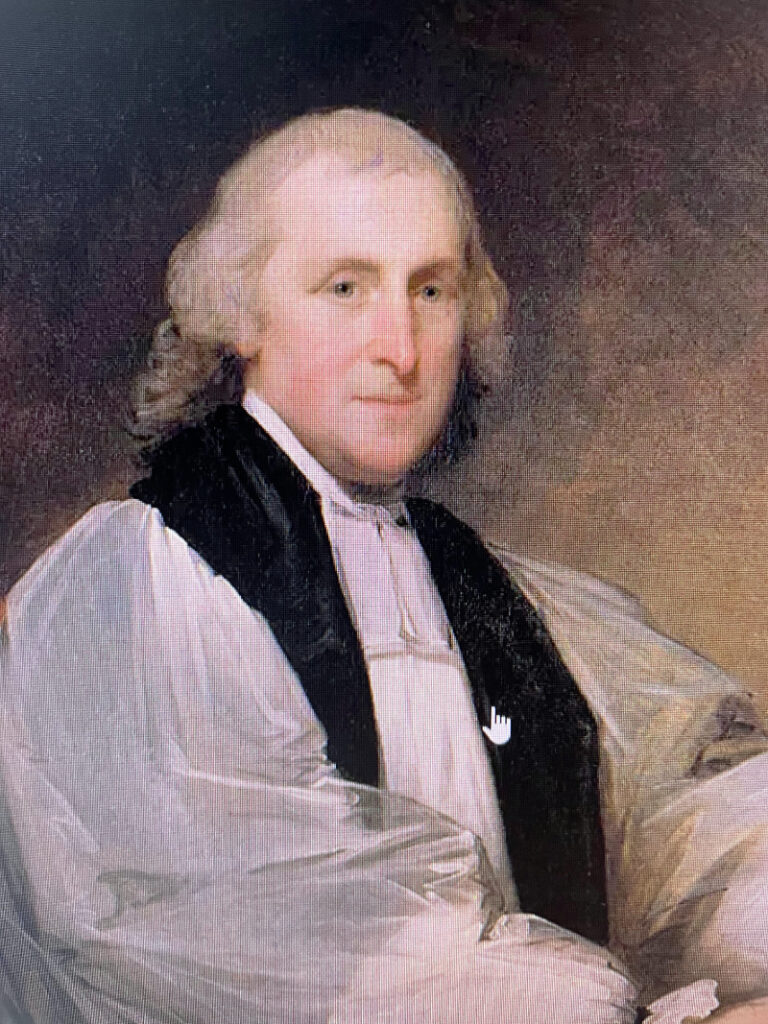
The concerns of the parishioners led to the establishment of an American church independent in its organization while remaining somewhat loosely part of the large Anglican Communion. Reverend William White (1748-1836), the rector of Christ Church, Philadelphia (established in 1784) used his genius of compromise to preside over the birth of a separate American church which would retain much of the form and tradition of the Church of England. During the summer of 1789 delegates met at Christ Church at the same time that the newly minted government under the United States Constitution was taking effect.The new delegates drafted an American Book of Common Prayer, developed a governance structure of elected Bishops, and created a bicameral which was without a name and by 1789 it was named The Protestant Episcopal Church of the United States.
THE PROTESTANT EPISOPAL CHURCH OF DELAWARE
In the beginning the protestant Episcopal Diocese of Delaware, tracing its founding to 1786, was the Anglican Diocese of Delaware and part of the Diocese of Pennsylvania. When in need of a priest the Bishop of Pennsylvania made the appointment. With some exception most of the priests to serve Delaware parishes came from Pennsylvania. For many years in the Courts of England, the Duke of York and William Penn and his heirs of Delaware, and Lord Baltimore and his heirs of Maryland contested the western and southern boundaries of Sussex County separating their states. Finally in 1775 the Courts of England made their decision. In 1791 the state legislature commissioned 10 Commissioners led by George Mitchel, state senator, Robert Houston,William Moore, John Collins, Nathan Young, and William Perry,Rhoads Shankland, Woodman Stockley, Daniel Polk, and Thomas Batsonto to acquire land in the center of Sussex County for the new County Seat. The new town was originally laid out as a square but in time took the shape of a circle one mile in diameter. The town was named Georgetown in honor of George Mitchel for all his time to make all this possible.On October 26, 1791, the General Assembly officially moved the Seat of Justice to the new County Seat. The old County Seat had been Lewes, previously known as Whorekill but the name was changed by William Penn.
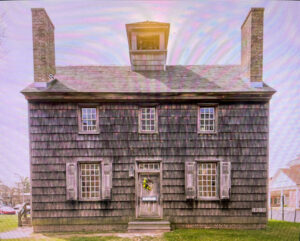
After Georgetown was approved by the state legislature Rhoads Shankland was instructed to lay out lots 60’ wide by 120’ deep. They had access to the streets or alleys. The commissioners were to be in charge of building a courthouse on the southeast corner of the circle and East Market Street. The enclosure is the restored courthouse on South Bedford between the circle and West Pine Street. The Jailhouse at right was facing East Market and Race Streets on an acre of land adjacent to the acre set aside for the courthouse of stone and brick.
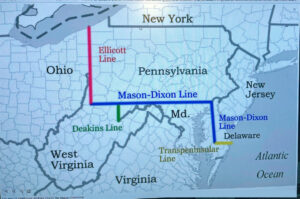
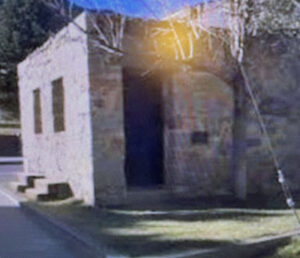
Tradition has it that the center of town was “Dale’s Cross Roads”. A Square of 100 yds each way was established for public use in the center of town. Records are not available as to the exact date of accomplishment, but records show that the first session of the courts was held in 1793, when the whipping post and pillory were removed from Lewes.
In Later years the town circle was increased to a 1 ½ mile diameter.
St. Paul’s Protestant Episcopal Church
While all the above was taking place for the new town a formal organization of the parish took place June 21, 1794 when six trustees were elected and acquired a lot on the southwest corner of Front and West Pine Streets upon which to create a place for worship.The trustees were Roland Bevin, Edmond Dickerson, Abram Harris, Philips Kollock, Isaac Wilson and Warren Jefferson. The new church would be St. Paul’s Episcopal Church. In 1795 the Rev. Tawes Wiltbank of Lewes conducted services in the new courthouse where infrequent services were held during the next 10 years. No attempt was made to build a church.
In 1805 the state legislature passed an act allowing the vestry to raise $1,500 by Lottery for the construction of a frame church and a fence to be placed around the cemetery on two lots at the southwest corner of East Pine and Academy Streets which were just purchased and the original lot was sold. This was the only way to get money in those days for the construction of Churches. On St. Paul’s Day January 25, 1806 the Rev. Hamilton Bell dedicated the church though it would take 20 years to be completed. He was at the time serving Christ Episcopal Church in Broad Creek, Delaware. The two obstacles causing the delay were money and the fence around the cemetery. The fence that was partially installed is around the cemetery today.
The pages of history are blank for some time.. The break from the mother church in England was particularly disastrous to the people in the “Forests of Sussex” where loyalist sentiment was strong. Here the Society for Propagation of the Gospel in Foreign Lands had sent missionaries who had been ordained in England. They had built chapels in the forest at the headwaters of streams which before completed became too small to hold the congregations so services had to be held under the trees. Men, women and children were baptized by the hundreds. These people came from Virginia and Maryland and were strong in their love of the church. At St. Paul’s there had only been two services held in the new church since its dedication in 1806.
Church affairs began to take on a new life. Bishop Onderdonck 1836-1841 and the missionaries had penetrated Sussex County and St. Paul’s Episcopal Church listed five ministers as holding services during the next nine years. They were not resident rectors but were sent down by the Bishop of Pennsylvania to officiate in the many parishes that were without a resident pastor.
Often, they served Milford, Lewes and Georgetown successively and even simultaneously, while caring for other parishes. One Rev. Higbee 1823-1833 reported that he had six churches in his charge in addition to St. Paul’s-St. George’s Chapel, St. Peter’s, Lewes, Prince George’s Church, Christ Church, Laurel, and St. John’s Church. Rev. Higbee’s tone is always optimistic in the hope that evangelical piety will be restored and spread. He later reported to the convention in the 1820’s the following: “These congregations continue much in the same state in which they have been for several years past, but still the rector entertains the hope that some improvement is gradually making in the condition of the churches, and with the divine blessing, the hope is finally cherished that primitive and evangelical piety will revive and spread its Holy influence in this part of Jehovah’s Vineyard.” In 1839 Bishop Ondedonck reported to the Convention that the lower half of the Diocese was entirely without ministers; that no church south of Smyrna was supplied with a resident rector.
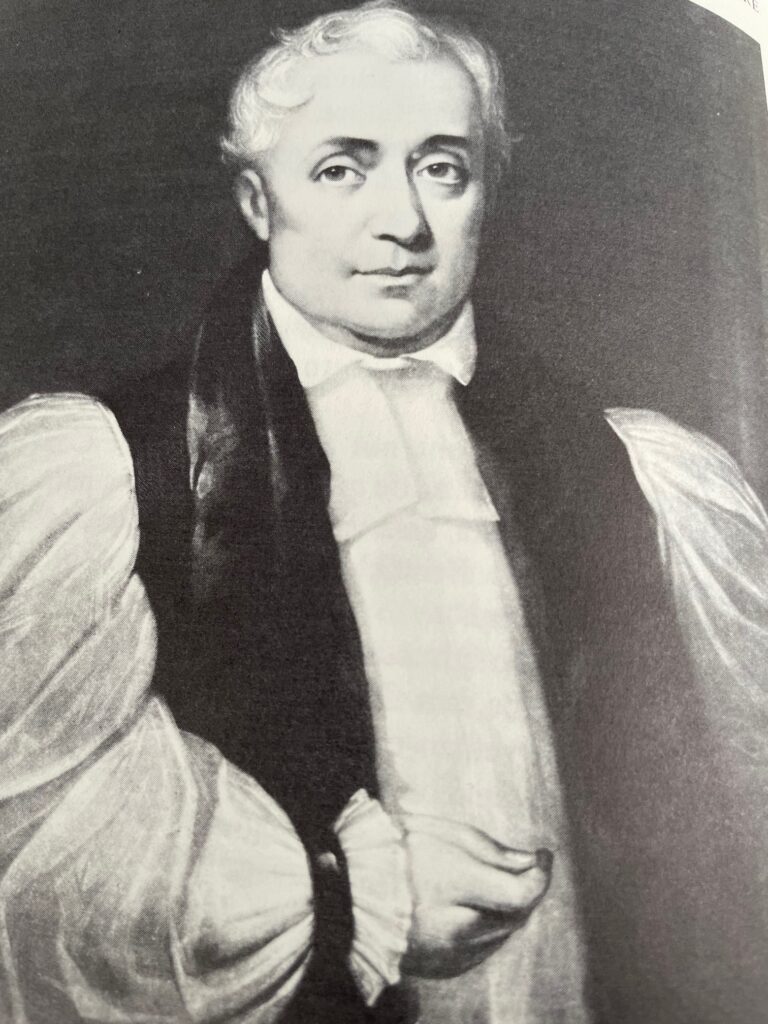
There is no mention in the printed copy of the convention journal for May 26, 1841 at Georgetown that there were plans to elect a Bishop. In Bishop Onderdonk’s address his one comment which led the delegates to believe he would not be back next year was: “With this brief statement, I leave you to the discharge of your duties, as one of the councils of the church of the Redeemer, and I pray God, that HIs blessing may rest upon you, both now and through your whole lives.”
Also at the meeting of the Convention, “Bishop Onderdonk informed the Delegates that they now represented a number of churches and parishes which entitled [them] to elect a Bishop. They were surprised and unprepared to nominate a candidate.”
“Such remarks by the Bishop are nowhere to be found in the convention journal. But after they were said to have been made, the Rev. Priestman of Immanuel Church suggested that the convention then proceed to the election of a bishop for the diocese. Delegate William Smith of Grace Church in Brandywine Hundred nominated the Reverend Alfred Lee of Calvary Church, Rockdale, Delaware County, Pennsylvania, not far from Delaware State Line.”
With no further nominations Reverend Lee was unanimously nominated. Unknowingly the Diocese membership was not aware of what had been taking place in the search for a candidate to serve as Bishop of the Protestant Episcopal Diocese of Delaware. Mr. William Smith, a founder of Grace Episcopal Church in Brandywine Hundred, had been made aware that Rev. Alfred Lee was looking to settle in the mid-atlantic area for his ministry and presently was serving Calvary Episcopal church in Rockdale, PA. as well as St. John’s Episcopal Church in Concord, PA. Mr. Smith, who was attending St. John’s until Grace church had a priest, invited Rev. Lee to visit Delaware before making a final decision in favor of Rockdale, PA.
In June of 1841 he made a tour of Kent and Sussex Counties and in July he toured New Castle County. “He said he was kindly received everywhere he went, but that he found the churches so depressed and feeble that he was greatly discouraged. Although absolutely convinced that a Bishop was what the state Episcopalians desperately needed, he now wished they had chosen someone with more experience than himself. His decision came down to what he preferred to do and what he felt his duty to do for “the Church of Christ.” His final answer was similar to the prophet Isaiah’s when the Lord called on him to become a prophet and go to his people and Isaiah said, “And I heard the voice of the Lord saying, whom shall I send, and who will go for us? Then I said, here I am, Send me.”
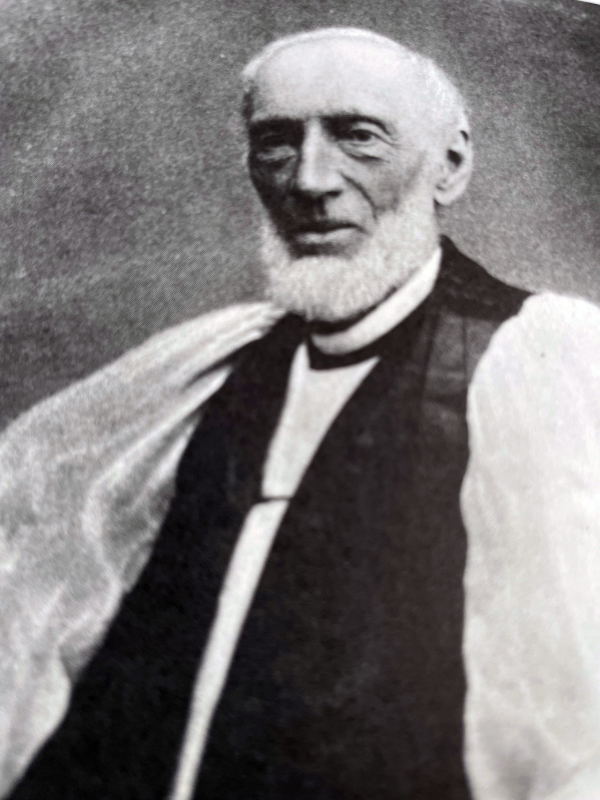
Rev Alfred Lee in his time answered the Lord’s call to go to Delaware with the same words:” here I am, send me.”Had the convention vote not been unanimous he could have opted out of accepting the call.
On Oct. 12, 1841 at St.Paul’s Chapel in New York City he was consecrated to the Episcopate during sessions of the General Convention. While there, he attended a meeting of the Board of Missions and persuaded them to accept Delaware within the first of operations of Domestic Missions.
Agreement was made for the board to aid in support of two missionaries in the lower part of the state. One was already selected by the Bishop, Rev. Walter E. Franklin, who was given parishes in Georgetown and Dagsboro in 1842.
After a year or so it was agreed to have 3 missionaries. The Rev. John Linn McKim became the second in Georgetown, Milford and Cedar Creek and the Rev. John Long, rector of St. Luke’s, Seaford, the third. Rev Franklin took charge of St. Peter’s in Lewes, Delaware.. Rev. Long was also given Little Hill and Broad Creek. This all took place in 1844.
While serving as Bishop he became Rector of St. Andrews Church in Wilmington. During his 40 years as Bishop he baptized 4,327 people and confirmed 10,082 others. He paved the way for a radical switch in the Episcopal Church’s stand on slavery in the 1860’s. In January of 1887, he caught typhoid fever and on April 12,1887 he died. He is interred in Old Swedes Church Cemetery in Wilmington.
Rev. McKim was born in Carlisle, PA in 1813. In 1830 he got his A.B. degree from Dickinson College and became a professor of Latin and Greek. In 1831 he started teaching at Bellefonte and Lewistown, PA. In 1832 he arrived in Newark, Delaware to occupy a chair in Delaware State College during its first year of existence. In 1835 he attended diocesan convention as a candidate for Holy Orders from Pennsylvania. In 1836 he was ordained in Philadelphia, Pennsylvania as a clergyman of the Protestant Episcsopal Church. He was then at churches in Lewes Georgetown, Indian River, and Dagsboro until 1938 when he went to be rector of the church in Honesdale, Wayne County, Pennsylvania after which he took charge of the parish in Carbondale, Pennsylvania. For three years prior to 1944 Rev John Linn Mckim spent time helping other parishes and teaching in the academies In 1844 he became priest of St. Paul’s in Georgetown, Christ Church in Milford, St Matthews in Cedar Creek and principal of the Academy in Georgetown.
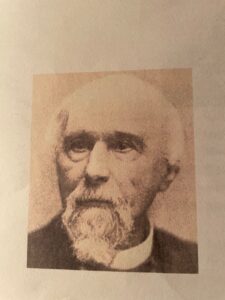
At the same time the brick nave was under construction – 38’ by 48’ in dimension. There were three galleries, the wall of the entrance and easterly and westerly sides and a raised pulpit with a canopied sounding board on the other. In front of the pulpit there was a clerk’s desk. The church was funded by monies left over from the Lottery designated for the construction of the Academy-Masonic building in Georgetown. Bishop Lee consecrated the church in November of 1844. During his incumbency, St. Paul’s Parish achieved a state of stability because of his outstanding leadership in the church and community in which he lived during 63 years of his life. Both he and Bishop Lee came from Pennsylvania at a time when Delaware was in danger of becoming extinct. In 1862 he left his rectorship of Christ Church in MIlford and his son Rev. John Leighton McKim replaced him there. In 1863-1864 Rev John’s father was alleged to have supervised the Gothic construction of Christ Church in Milford, Delaware by Author W. Barksdale Mayard of Sah-Archapedia. In 1867 he resigned from St. Paul’s to do mission work in Sussex County. In 1889 he received from President Harrison the appointment of United States Consul at Nottingham, England where he resided until 1893. He came back to his little home which was on a corner across from St. Paul’s until his death in 1909. One who knew him well wrote,”he was a thoroughly classical and mathematical scholar whose learning was accurate, varied and extensive. His was a singularly pure life of gentle manners and cultivated taste and should be held in grateful memory as long as the parish shall have a history.” Rev. McKim and his first wife are interred at St. George’s Chapel in Harbeson, Delaware. His second wife Penelope Layton McKim is interred here at St. Paul’s. Rev. Charles L. Allen succeeded Rev. McKim as rector of St. Paul’s until 1871 at which time Rev. Benjamin J. Douglass arrived to serve the parish for 13 years. These 13 years were very exciting for St. Paul’s church.
The nave which was built in 1844 was in dire need of repair. There are no church records to verify what and when the remodeling was to take place but according to most published accounts the remodeling was done in 1880-1881. The brick of the old nave was retained and a bell tower was placed at the entrance including a porch and the sanctuary was added at the other end with a small sacristy on one side and a vestry room on the other. The bell in the tower was made in 1846 by Joseph Bernard who apprenticed at John Wilbank.
We do know there has been much published that McKim, Mead and White Architects of New York designed the Victorian/Gothic structure that we know it to be today. Charles Fallon McKim was Rev. John Linn McKim’s nephew who in 1884 designed and built St. Paul’s Episcopal Church, his first church, in Stockbridge, Massachusetts according to an article written by Derek Strahan.This has raised questions concerning McKim, Mead and White’s involvement with St. Paul’s Victorian/Gothic design and construction. Also an article authored by W. Barksdale Maynard of Sah-Archipedia has left a major question mark to the authenticity of Rev. John Linn McKim or McKim, Mead, and White of having anything to do with the 1880’s construction.
Rev. Benjamin J. Douglass arrived in 1871 to serve the parish for 13 years. These 13 years were very exciting for St. Paul’s church.There is not much written about Rev. Douglas, but there is information about him in an anniversary book of St. Paul’s Episcopal Church in Oaks, Pennsylvania where he died still serving the church.
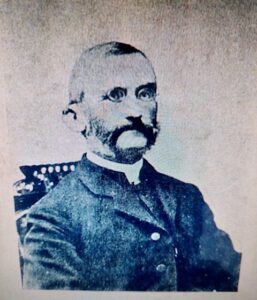
The town of Georgetown had a different kind of map of Georgetown produced in 1885.It shows the buildings of the town.The church and Sunday school are just left and right of the centerline of the picture and about one third of the way up from the bottom of the picture. At the left edge of the picture is the new private school for Georgetown which replaced the academy that closed at the end of 1865.
“For 13 years the Rev. Benjamin J. Douglass was the Rector, and during that time his faithful pastoral visitations won for him the love, affection and respect not only of his own congregation, but also of all with whom he came in contact. Gentle in disposition, he was ever ready with a helping hand to aid the suffering and afflicted.”
Rev. Douglass and Mrs. Douglass’s two infant sons are interred in St. Paul’s Cemetery in Georgetown. The Sunday School Building was purchased while Rev. Douglas served St. Paul’s and the final payment was made soon after he resigned.
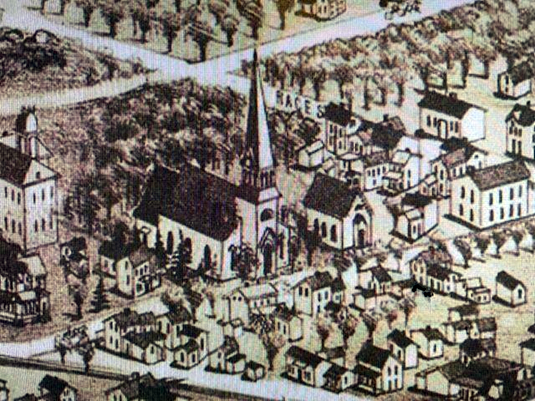
Rev. Douglas must have had outstanding patience and a strong faith to keep the parish together. His 13 years of service in itself says much for him. He went back to Pennsylvania after his resignation in 1884.
Following Rev. Douglas was Rev. James C. Kerr who came from Milford in 1885. Rev. Kerr had a pipe organ installed in the church. The air was supplied by bellows. In memory of all the faithful departed of St. Paul’s, a new Eucharist altar was purchased. The Sunday school flourished during his stay. He did much to develop the interior of the Sunday School building. The superintendent was Edwin R Paynter. Records left by Rev. Kerr indicate a wide range of many services conducted. He mentions conducting several missions for colored people of the town. Rev. Kerr had left a record of baptisms and marriages up to 1887. Rev. Kerr, according to Rev. Beshears moved the parish from “low church” to “high church” by hiring an assistant priest and an organist, and purchasing “elaborate” vestments, all out of his own pocket. His only regret was there was no rectory and living out of hotels got expensive.
By 1887 the diocese was in a crisis for there was no Bishop or Rector for St. Paul’s. Rev. J. Leighton McKim, son of Rev. John Linn McKim, came in 1889 to tend to pressing needs of St. Paul’s. Miss Elizabeth M. Harris and the Rev. J. Leighton McKim donated the Font in memory of Clara Robinson. In 1894 he left St. Paul’s for Christ Church in Milford, Delaware. He and his two daughters Helen and Marian became an integral part of the church and community during the five years of their residency.
In 1888 Delaware went to Pennsylvania for their new Bishop. They elected Rev. Leighton Coleman, rector of the Church of the Redemption in Sayre, Pennsylvania, to the Bishopric of the Diocese. Bishop Coleman was consecrated on St. Luke’s Day 1888. The following year he visited St. Paul’s. He was a robust, virile and original character with a vision and experience beyond the ordinary. He died December 14, 1907.
At this point an interesting observation comes to play in the life of the Protestant Episcopal church of Delaware. Bishop Lee had been an Evangelical Low Churchman and Bishops Coleman and Kinsman High Churchmen though Bishop Kinsman disliked the use of the adjectives, considering them of less importance than “the necessary and admirable noun.” He believed the principles of Churchmanship were high, low and broad at the same time —well rounded churchmanship: but he also felt these terms were becoming obsolete.
Bishop Lee was mild and gentle of speech: calm and dignified in his personal bearing; but underneath the “velvet glove” a fighter for the causes in which he believed. As rector of St. Andrew’s Church during his episcopate, he knew both the life of the country parson and the chief priest.
Bishop Coleman, robust, jolly, good natured, loved children and people, and worked tirelessly for the church. He was a tremendous traveler both within and without his diocese, with no problem too tough for him to tackle. He also had great compassion for the weak and downtrodden.
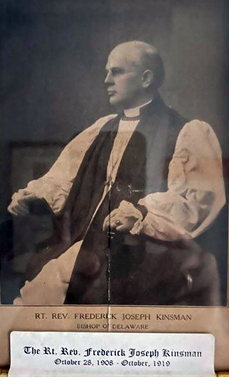
Bishop Kinsman,our third Bishop, the lonely, brooding, scholar and mystic, schooled in the Oxford brand of Anglo-Catholic theology, searching “fora more definite grasp and expression of the historic Christian faith.” He was a teacher rather than a leader, and loved Sussex County for it was Delaware.
All three were men of principle and deeply religious. They were loved by the diocese for the way they were- right or wrong – and they in turn were devoted to Delaware for the way it was.

In 1896 the Sunday School building was moved to Academy Street to make room for the new Rectory whose first occupant would be the Rev. John Warnock who came in 1897. He left in 1900. In September of 1897 the actual construction of the rectory got underway with Dr. John W. Messick, a vestryman of the parish, as architect and supervisor and Mr.William Burton of Lewes as contractor. The building was twenty nine by forty three feet and the cost for the whole project was $1,500. Bishop Coleman, the second Bishop of Delaware dedicated the new rectory, and the next day instituted the Rev. John Warnock as rector of the parish.
From 1900 to 1909 finances were still a problem in keeping a priest..
In 1909-1912 Rev Wilmot Gateson came to St. Paul’s after being ordained in Brooklyn, NY upon completion of his studies at General Theological Seminary. He would be paid $750. Accompanying him were his mother and two sisters. He was right out of seminary. Story has it that his mother and sisters used to have concerts in the Georgetown opera house for which they charged admission. The proceeds went to St. Paul’s. Much was done to enrich the music program of the church. Before leaving St Paul’s Church in 1912 he started a boys club which met in the top story of the Mechanics Hall, and had assistance from several Georgetown Men.
Right after leaving St.Paul’s Church he married Marian Anne Blackstone who was a member of St. Paul’s along with her parents and five siblings. The family has a burial plot in the cemetery. During World War ll a number of doctors left their practices to serve the soldiers. One of her brothers became a doctor and practiced in Wilmington, Delaware and stayed behind to care for the citizenry. A member of our parish who grew up in Wilmington had Dr. Blackstone for his family doctor till the end of the war. The Madonna and Child on the rear wall of the church is a gift in memory of Augusta Virginia Gateson by Rev. Gateson.
During Rev. Gateson’s service to St. Paul’s Church Bishop Coleman passed away in 1907 but before his death he became convinced that the only way to fight the cynicism and confusion of the times was to thoroughly educate the children of the church in the basic beliefs as found in the Creed, the Lord’s Prayer, and the Ten Commandments.
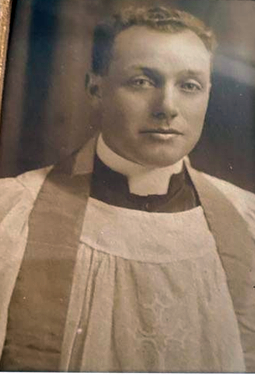
The financial picture of the St. Paul’s Church began improving after Rev. Bateson’s tenure.
On Palm Sunday 1911 the Young Men’s Class presented the Processional Cross that is used today.
In 1914 the beloved “father” Rev. Samuel Dies VanLoan came to St. Paul’s. He was to be a welcomed addition. One of his first contributions was to bring someone in to assess the needs of the organ. He hired Charles S. Haskell of Philadelphia, Pennsylvania to rebuild the organ. In 1925 a new Kinetic Organ Blower was installed in the vestry room replacing the unrepairable blower.
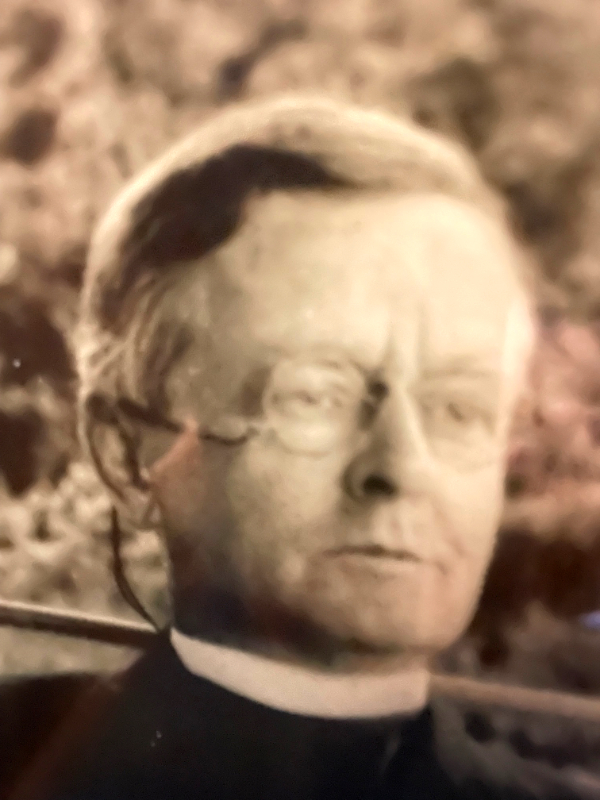
He was cultured, talented and artistic of recognized ability. Under his artistic inspiration the church and grounds were beautified: shrubbery was planted in the churchyard, and the pipe organ was put in good condition. After his resignation in 1929, “Father” Van Loan, as he was called by many, continued to officiate at baptisms and marriages, still keeping his interest in the young people of the parish. He died at his home in Georgetown in 1942 and was interred in the churchyard adjacent to the Sacristy patio. The years following “Father” Van Loan’s resignation St. Paul’s enjoyed a good succession of rectors after 1934 through to Father Michael Bye’s tenure.
The old Sunday School building had seen better days by 1941 and a decision was made to add a parish house to the existing church. The parish house was designed by William H. Thompson. The new brick and steel construction added greatly to the appearance and beauty of the church property. The cost was $21, 000. A gift of $5,000 from Mrs. Felix DuPont, along with $6,000 raised by the parish and $5,000 more from the sale of timber on the church farm almost paid for the structure.
Rev. Richard K. White came to St. Paul’s in 1934. He was actually a resident of Elkton, MD. He was a member of the diocese Social Service Department that worked jointly with the Juvenile Court of New Castle County, Delaware and Probation Association in the 1930’s. He along with others helped spark the idea of getting this organization to set up offices in Kent and Sussex Counties. During the summer of 1932 he helped start Camp Appoquinimink for boys on Silver Lake not far from St. Andrews School in Middletown, Delaware. He was made director for the summertime encampment. He was a member of the notification committee of a new Bishop’s election. In this case, Bishop McKinstrey. With the start of World War II, the 113th Infantry Headquarters was placed in Georgetown and the Coast Guard moved in to the Fenwick Lighthouse property. They were in charge of patrolling the beaches from Fenwick to Cape Henlopen. Rev. White extended a welcome to them on behalf of St. Paul’s Parish. He also set up a canteen for the military in Georgetown. Rev. White who had been with St. Paul’s since 1934 offered his services in 1942 to the armed forces and was accepted by the U. S. Army to be stationed at Fort Belvoir, VA. Although offered a leave of absence he resigned.
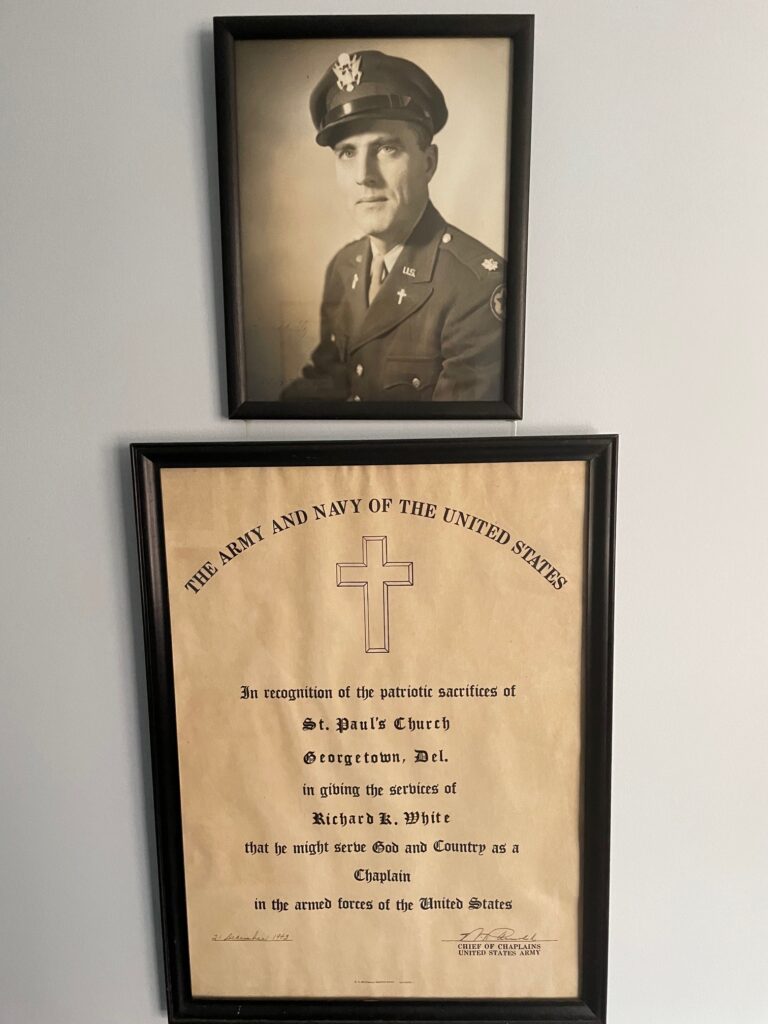
Rev Settle came in 1942 till 1947. He enjoyed working with the young people while often taking the boys of the parish on camping and hiking trips. He also served St. Mark’s in Millsboro, Delaware.
Rev. Glen Walters was called as rector of St. Paul’s in the fall of 1947. Under Rev. Walter the parish broadened its aspect and became more truly representative in the community. A man of great energy and vitality, Rev. Walters has been responsible for improving the physical plant of the church helping to make St. Paul’s the most attractive church in the area. He left in 1955 and was followed by Rev. David B. Mulford from 1956 to 1969. Rev. Mulford spent a great deal of time in the community meeting the community members and extending the hand of friendship with an invitation to visit St. Paul’s.
On February 22, 1953, the church porch was converted to being a vestibule given by Leah Burton Paynter in memory of her husband the late Roland G. Paynter, Vestryman and Warden. Rev. Arthur R. McKinstry officiated at the dedication.
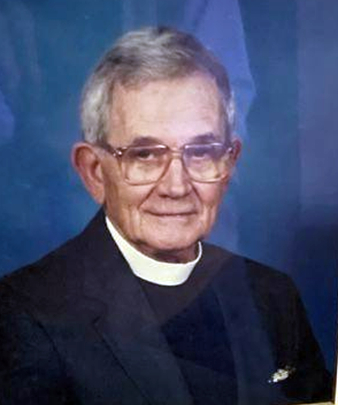
Reverend George E. Stokes, who came to St. Paul’s in 1969 was installed as our Rector on January 18, 1970. We joined St. Martin’s in the Field of Selbyville, St. Mark’s of Millsboro, and St. John’s the Baptist of Milton to form a coalition with Rev. Stokes as chief Priest. This arrangement seemed to work well and has brought these four parishes closer together for mutual benefit. The coalition was formed in 1975, and in 1977, after using many trial liturgies, The Book of Common Prayer, which is now in use was adopted. We lost several members who wanted to keep the 1928 Book of Common Prayer. Rev. Stokes was a big supporter of the youth of the church and one of his thrills was to teach the confirmation classes.
In 1976 the rectory was torn down, and the new rectory was purchased on Old Park Ave. which had been the home of one of the parishioners.
In 1979 St. Paul’s was placed on the National
Register Of Historic Places of the United States.
Throughout 1980, 1981, and 1982 our membership increased.
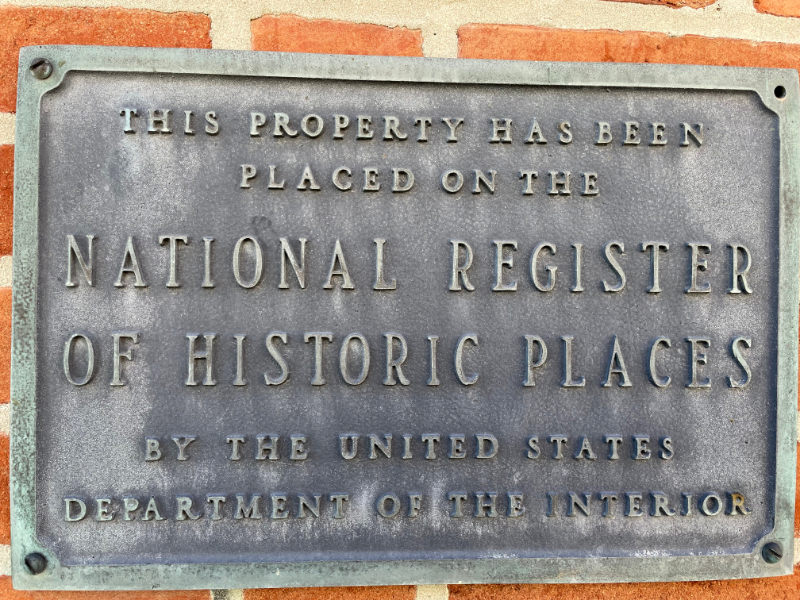
Rev. Stokes retired in 1985 and after two interim Priests Father Bye came to St. Paul’s in 1988. What a beginning challenge for a new rector. St Paul’s withdrew from the coalition on the arrival of Father Bye. The church fire took place in the early morning hours of February 27, 1987.


Fortunately, the Sacristy only had smoke damage, and the Sanctuary, Nave and Bell Tower were saved. In spite of the destruction that took place the parish survived. A trailer was brought in for an office, and meetings were held in private homes. Father Bye was very involved in the community and sensitive to how to help the needy. He was a wonderful preacher. Standing at the end of the aisle, sometimes making his delivery walking up and down the aisle addressing members of the parish. He conducted Wednesday morning Eucharist with fellowship for those who could come afterwards.
He, similar to Rev. Gateson, was married to the daughter of the owner of Lewes Dairies and his dairy was famous for the “eggnog” at Christmas. Rev. Bye was very helpful to two members of the community for providing them burial lots at their death. By 1990 things were about back to normal and church activities were getting underway. Our children finally had a church school again.




One person that has not been mentioned with regard to our children is Doris Hickman who for years was Sunday School Superintendent. The children looked forward to her lessons every Sunday morning.
For three years we were without a Priest.
In 2002 Rev. Earl D. Beshears came to us for the next eight years. Rev. Beshears was very taken with the history of St. Paul’s. Despite low membership and limited financial resources, both of which persisted throughout much of the 19th century. He said, in keeping with most American Episcopal churches in the early 1800’s they were more evangelical than catholic, not being much influenced by England’s 1840’s catholic revival. Fr. James Kerr in 1885 moved the parish from “low church” to “high church.” At the same time he conducted several Georgetown area missions for African Americans. Subsequent incumbents have encouraged an evangelical-catholic balance. When we received the “Tedeum window” a description came with it. After very careful study by Rev. Beshears rewrote the description to include all figures in the window – very beautifully done.

